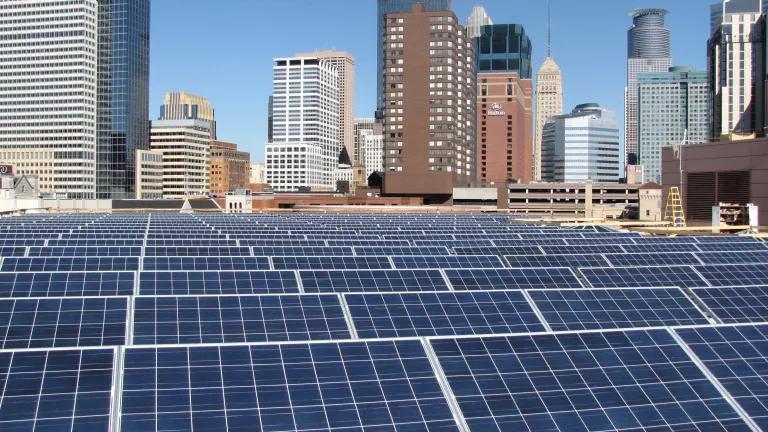California Approves Novel Low-Income EV Charger Program
PG&E will launch a new program to reduce barriers to electric vehicle (EV) adoption in low- and moderate-income communities in Northern California.

PG&E will launch a new program to reduce barriers to electric vehicle (EV) adoption in low- and moderate-income communities in Northern California, under a decision by the California Public Utilities Commission. The $4 million program would provide incentives for up to 2,000 low- and moderate-income households to cover the cost of a residential EV charger, increase awareness of the benefits of EV adoption through targeted education and outreach, and provide information on other incentives and programs available to customers.
While electric utilities currently have around $700 million in approved programs that incorporate investments in disadvantaged communities or other equity elements, this would be the first program designed exclusively for low- and moderate-income households. Accordingly, PG&E’s program would provide lessons for the design of future programs tailored to low- and moderate-income communities by other utilities, as well as for ways to increase those households’ participation in broader programs that target all customers.
Addressing Barriers to EV Adoption in Low-Income Communities
Low- and moderate-income communities still face significant barriers to EV adoption. In addition to the upfront cost of purchasing an EV, access to charging infrastructure and lack of awareness have inhibited EV adoption in these communities. In many cases low-income drivers face heightened barriers relative to other drivers, with diminished access to financing, less access to information on EVs (especially in non-English speaking communities), and a lack of public charging infrastructure in their neighborhoods. PG&E’s Empower Electric Vehicle Charger Incentive and Education Program is designed to address all of these barriers and will serve a critical role in expanding the benefits of transportation electrification to these historically underserved households.
The Empower Program will conduct focused outreach in three communities—Oakland, San Jose, and Fresno—but will be open to enrollment for any low- or moderate-income household in PG&E’s service territory. PG&E will partner with local community-based organizations that will provide EV education and incentive information and gather data used for program evaluation. By leveraging on-the-ground outreach from these groups, the program aims to better tailor its education and outreach to serve the specific needs of these communities, including non-English speaking households. This outreach will encourage enrollment in the program from low- and moderate-income households, while also educating customers on EVs and the incentives available to them through other utility and state-wide programs.
For customers who enroll in the program, PG&E will provide a $500 rebate to offset the charger installation costs that often pose an additional barrier to EV adoption. Home charging is even more important for lower-income customers, who often have less access to charging infrastructure at work or at public locations in their community. For households that require an upgrade to existing electrical panel infrastructure to accommodate an EV charger, PG&E will offer an additional incentive of up to $2,000. PG&E will also coordinate with partners to procure charging stations for customers and streamline the charger installation process, eliminating the need for customers to navigate the market and installation process on their own.
To ensure participants are able to realize the fuel cost savings relative to gasoline that are the single biggest motivator of light-duty EV purchase decisions, PG&E will place customers onto time-of-use rates by default while also directly working with customers to help determine which rate plan results in the greatest level of savings. This will improve the economics of EV adoption for participating households and encourage drivers to charge in a manner that supports the electric grid.
Empowering Future Low-Income EV Charging Programs
As the first utility EV infrastructure program designed exclusively around needs of low- and moderate-income households, the insights gained from PG&E’s program could inform and enhance the design of future programs across California and beyond. PG&E plans to gather data during implementation to learn about what worked well and what could be improved for future EV programs, which will enable it to improve future program offerings and efficiently use program funds.
The lessons learned from the implementation of the program will not only improve the scalability of this pilot but will also inform the development of similar programs by other utilities. Additionally, deeper understanding about the most effective forms of education and outreach for low- and moderate-income communities could also help enhance those communities’ participation in broader programs.
The approval of this program reflects the support of a broad and diverse group of stakeholders who participated in the commission’s public process to review the proposal. NRDC, the Coalition of California Utility Employees, Sierra Club, Greenlots, Siemens, Union of Concerned Scientists, Plug in America, EVBox, Honda Motor Co., the Alliance of Automobile Manufacturers, and the Association of Global Automakers had jointly urged the Commission to approve the program. The Greenlining Institute and GRID Alternatives also played a critical role in recommending improvements to the program and urging approval by the Commission.


